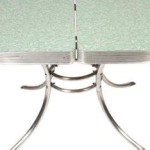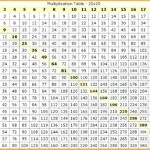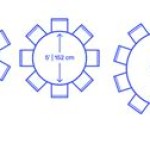Vegetable Garden Design Ideas for Your Backyard
Cultivating a vegetable garden in a backyard offers numerous benefits, from providing fresh, healthy produce to fostering a connection with nature. The design of such a garden is crucial for optimizing space, maximizing yield, and enhancing the overall aesthetic appeal of the backyard. Careful planning, considering various design elements, and selecting appropriate layouts are essential for creating a thriving and productive vegetable garden.
The success of a backyard vegetable garden hinges on several fundamental factors. Sunlight exposure is paramount; most vegetables require at least six hours of direct sunlight daily. Soil quality is equally important, necessitating well-draining soil rich in organic matter. Accessibility, in terms of proximity to water sources and gardening tools, should be considered. Finally, understanding the local climate and seasonal growing patterns is crucial for selecting appropriate vegetable varieties and ensuring their successful cultivation.
Planning the Layout: Maximizing Space and Sunlight
Effective layout planning is critical for maximizing the use of available space and ensuring optimal sunlight exposure for all plants. There are several popular layout options, each with its own advantages and considerations.
The traditional row garden is a classic layout, characterized by vegetables planted in straight rows. This design facilitates easy access for weeding, watering, and harvesting. However, it can be less space-efficient than other layouts, especially in smaller backyards. The rows should ideally run north to south to ensure even sunlight distribution throughout the day, minimizing shading between taller and shorter plants. The spacing between rows should be wide enough to allow for easy movement and the use of gardening tools. Proper drainage is also important in a row garden; slightly raised beds can help prevent waterlogging, particularly in areas with heavy clay soil.
Raised bed gardening involves constructing elevated planting beds, typically enclosed by wooden frames, brick, or other materials. This method offers several advantages, including improved soil drainage, better soil control, and easier access for gardeners with limited mobility. Raised beds warm up faster in the spring, extending the growing season. They also allow for the use of custom soil mixes, tailored to the specific needs of different vegetables. The size and shape of raised beds can be customized to fit the available space, and they can be arranged in a variety of configurations, such as rectangular grids or more organic, flowing patterns. Consider the material used for the raised bed construction. Untreated wood may decompose over time, while treated wood should be carefully considered for potential chemical leaching. Stone or brick offer durability but can be more expensive.
Square foot gardening is a structured method that divides the garden area into a grid of one-foot squares. Each square is then planted with a specific number of plants, depending on their size and spacing requirements. This method is highly space-efficient and simplifies planting and maintenance. It's particularly well-suited for small backyards or for gardeners who want a highly organized and controlled growing environment. The square foot gardening method often utilizes a specific soil mix (Mel's Mix), which is a blend of compost, peat moss, and vermiculite, providing optimal drainage and nutrient retention. The grid system makes it easy to track planting schedules and crop rotations, further enhancing the efficiency and productivity of the garden.
Vertical gardening is an excellent option for maximizing space in very small backyards, balconies, or patios. This method involves growing plants on vertical structures, such as walls, fences, or trellises. Vertical gardens can be constructed from various materials, including pallets, repurposed gutters, or commercially available vertical planting systems. Climbing vegetables, such as beans, peas, cucumbers, and tomatoes, are well-suited for vertical gardening. Leafy greens and herbs can also be grown in vertical planters. Vertical gardening not only saves space but also adds visual interest to the backyard landscape. Proper watering and drainage are crucial for vertical gardens, as the plants are often more exposed to the elements and can dry out quickly. Drip irrigation systems can be particularly effective for ensuring consistent watering.
Selecting Vegetables and Companion Planting
Choosing the right vegetables to grow in a backyard garden is crucial for ensuring a successful and productive harvest. Consider the local climate, soil conditions, and personal preferences when selecting vegetable varieties. Companion planting, the practice of growing certain plants together to benefit each other, can further enhance the health and productivity of the garden.
Climate considerations are essential for vegetable selection. Cool-season vegetables, such as lettuce, spinach, kale, and peas, thrive in cooler temperatures and are typically planted in the early spring or fall. Warm-season vegetables, such as tomatoes, peppers, cucumbers, and beans, require warmer temperatures and are planted after the last frost. Understanding the local growing season and frost dates is critical for timing planting appropriately. Microclimates within the backyard can also influence vegetable selection. For example, a south-facing wall may provide a warmer microclimate suitable for heat-loving vegetables, while a shaded area may be better suited for leafy greens. Consider the amount of sunlight each area of the garden receives and choose vegetables accordingly.
Soil testing is recommended to determine the pH and nutrient content of the soil. Most vegetables prefer slightly acidic soil with a pH between 6.0 and 7.0. Soil amendments, such as compost, manure, or lime, can be added to adjust the pH and improve the soil texture and fertility. Different vegetables have different nutrient requirements. Leafy greens require high levels of nitrogen, while fruiting vegetables, such as tomatoes and peppers, require more phosphorus and potassium. Soil testing can help identify any nutrient deficiencies and guide the selection of appropriate fertilizers. Consider using organic fertilizers, such as compost tea or fish emulsion, to provide nutrients without the risk of chemical buildup in the soil.
Companion planting involves strategically planting certain vegetables and herbs together to benefit each other. Some plants can repel pests, attract pollinators, or improve soil conditions for their neighbors. For example, planting basil near tomatoes can help repel tomato hornworms and improve the flavor of the tomatoes. Marigolds are known to repel nematodes and other soil pests, making them a good companion plant for many vegetables. Beans and peas are legumes that fix nitrogen in the soil, benefiting nitrogen-hungry plants like corn and leafy greens. Avoid planting incompatible plants together, as they may compete for resources or attract pests and diseases. For example, avoid planting fennel near dill or coriander, as they can inhibit each other's growth. The principles of companion planting can be applied creatively to create a more diverse and resilient garden ecosystem.
Crop rotation involves rotating the location of different vegetable families in the garden each year. This practice helps prevent the buildup of soilborne pests and diseases, improves soil fertility, and promotes biodiversity. A typical crop rotation plan involves dividing the garden into different sections and rotating the vegetables through these sections each year. For example, legumes (beans and peas) can be followed by leafy greens, which can be followed by fruiting vegetables (tomatoes, peppers, and eggplants). Crop rotation can be particularly beneficial in larger gardens with multiple planting beds. It helps maintain soil health and reduces the need for chemical pesticides and fertilizers. Careful record-keeping is essential for tracking crop rotations and ensuring that plants are moved to new locations each year.
Integrating Aesthetic Elements and Functionality
A well-designed backyard vegetable garden should be both productive and aesthetically pleasing. Integrating aesthetic elements, such as flowers, pathways, and decorative structures, can enhance the visual appeal of the garden and create a more inviting outdoor space. Functionality is also important; the garden should be easy to access, maintain, and harvest.
Adding flowers to a vegetable garden can enhance its beauty and attract beneficial insects and pollinators. Choose flowers that are known to attract bees, butterflies, and other beneficial insects, such as sunflowers, zinnias, cosmos, and lavender. Incorporate edible flowers, such as nasturtiums, pansies, and calendula, which can add color and flavor to salads and other dishes. Planting flowers in strategic locations, such as along the edges of the garden or interspersed among the vegetables, can create a more visually appealing and ecologically diverse environment. Consider the color and texture of the flowers and choose varieties that complement the vegetables. Avoid using pesticides on or near flowers, as they can harm beneficial insects.
Pathways are essential for providing access to all areas of the garden and preventing soil compaction. Choose pathway materials that are durable, attractive, and easy to maintain, such as gravel, mulch, stepping stones, or pavers. The width of the pathways should be sufficient to allow for easy movement with gardening tools and equipment. Raised beds can simplify the construction of pathways, as the beds create defined borders and reduce the risk of soil erosion. Consider the aesthetic appeal of the pathways and choose materials that complement the overall design of the garden. Avoid using dark-colored materials in sunny areas, as they can absorb heat and make the pathways uncomfortable to walk on.
Structures, such as trellises, arches, and fences, can add visual interest and functionality to the vegetable garden. Trellises can be used to support climbing vegetables, such as beans, peas, and cucumbers, while arches can create a dramatic entrance to the garden or define different planting areas. Fences can protect the garden from pests and animals and provide a backdrop for climbing plants. Choose structures that are durable, weather-resistant, and aesthetically pleasing. Consider the size and scale of the structures and ensure that they are in proportion to the overall size of the garden. Incorporate decorative elements, such as vines, flowers, or artwork, to enhance the visual appeal of the structures.
Water features, such as ponds, fountains, or bird baths, can add a soothing and relaxing element to the vegetable garden. Water features can attract birds and other wildlife, providing habitat and enhancing the biodiversity of the garden. Consider the location of the water feature and ensure that it is easily accessible for maintenance and cleaning. Choose water features that are appropriate for the size and style of the garden. Avoid using harsh chemicals to clean water features, as they can harm aquatic life and contaminate the soil. Regularly clean the water feature to prevent the buildup of algae and debris.
By thoughtfully integrating aesthetic elements and functionality, it is possible to transform a backyard vegetable garden into a beautiful and productive outdoor space. Careful planning, attention to detail, and a willingness to experiment are key to creating a garden that is both rewarding and enjoyable.

75 Vegetable Garden Landscape Ideas You Ll Love November 2024 Houzz

Simple Steps To Start A Garden For The Beginner Vegetable Design Small Gardens Backyard

25 Incredible Vegetable Garden Ideas Trees Com

Vegetable Garden Layout 7 Best Design Secrets A Piece Of Rainbow

Small Vegetable Garden Ideas Gate

30 Beautiful Small Garden Design For Backyard Ideas Gardening Gardendesign Vegetable Gardens

36 Amazing Ideas For Growing A Vegetable Garden In Your Backyard

Vegetable Garden Ideas Landscaping With Vegetables Network

25 Incredible Vegetable Garden Ideas Trees Com

Small Vegetable Garden Ideas Tips Design








